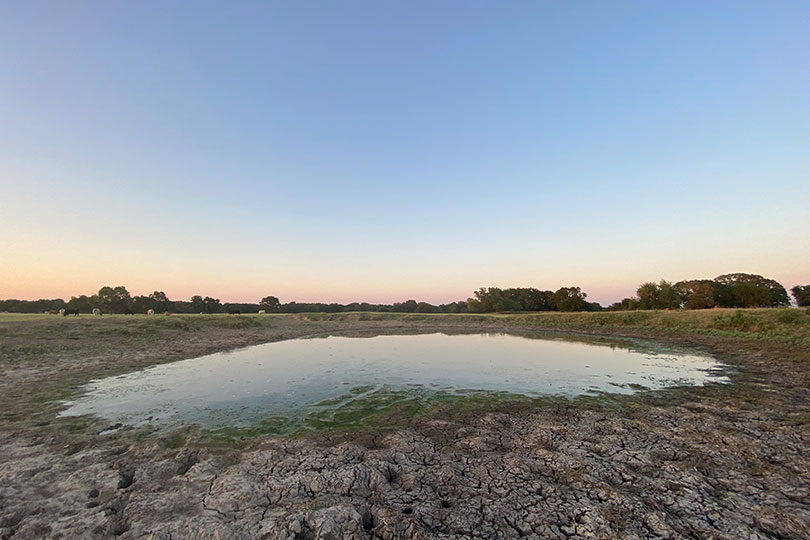By Emmy Powell
Communications Specialist
Unrelenting heat and prolonged drought conditions have withered crops and reduced green pastures to crispy, brown fields. And many Texas ranchers are facing difficult decisions and culling herds as drought conditions hang on.
It’s a situation facing John Connaway who has a cow-calf operation in Brown County.
“I’ve been involved in our ranch since the late ’60s, and I can’t remember another time when we had this combination. We’ve had lots of droughts, but the combination of the drought, lack of surface water, heat and then inflation all hitting at once makes this tough,” Connaway said.
Early June brought rain that provided temporary relief.
“We got a couple of inches of rain, and that really saved us. We were to the point of liquidating several, if not all, of our herds at that point,” he said.
But with triple-digit temperatures and no rain in the forecast, Connaway is concerned about the future.
“We’re feeding liquid feed and cubes to try to supplement the small bit of dry grass that we have,” Connaway said.
As stock tanks dry up, access to water is also a concern.
“Several of our places where we have run out of water, we were lucky enough to have a rural water supply. So we’re using that where we can,” he said. “That’s not a very economical situation, but at least it allows us to continue.”.
The drought also impacted Connaway’s annual hay production, giving him another reason to cull his cow herd.
“We start out with the easy culls. There are some cattle you need to cull,” Connaway said. “Then, you start to get into the harder ones, and then you get into the ones where you really don’t want to cull, but you’re doing what you have to do. Looking at my numbers, if I compare back to 2021, right now I’m down about 20%. If I go back to my, what I kind of consider my base load in 2020, I’m down 30%.”
This year’s drought has been compared to the drought of 2011—a drought that many farmers and ranchers would like to forget. But Connaway thinks this year is worse.
“I think it’s worse just because of the amount of time we’ve had since we really have had running water. Back then, it was definitely dry. We culled cattle then, as well, but I don’t remember us running out of surface water in as many places as we are now.”
In Brown County, Connaway estimates he’s only received about 8.5 inches of rain for the year. And that was coming off of a dry fall and winter.
“We went into 2022 with a huge deficit—no rain and then we’ve had very little going forward,” he said.
If the drought continues, Connaway will sell more cows.
“Certainly, through the summer is going to continue to be tough. We’ll have to continue to cull down,” he said.


🙏📖🙏prayers sent
Farming and Ranching isn’t a life choice for the Weak!!!!